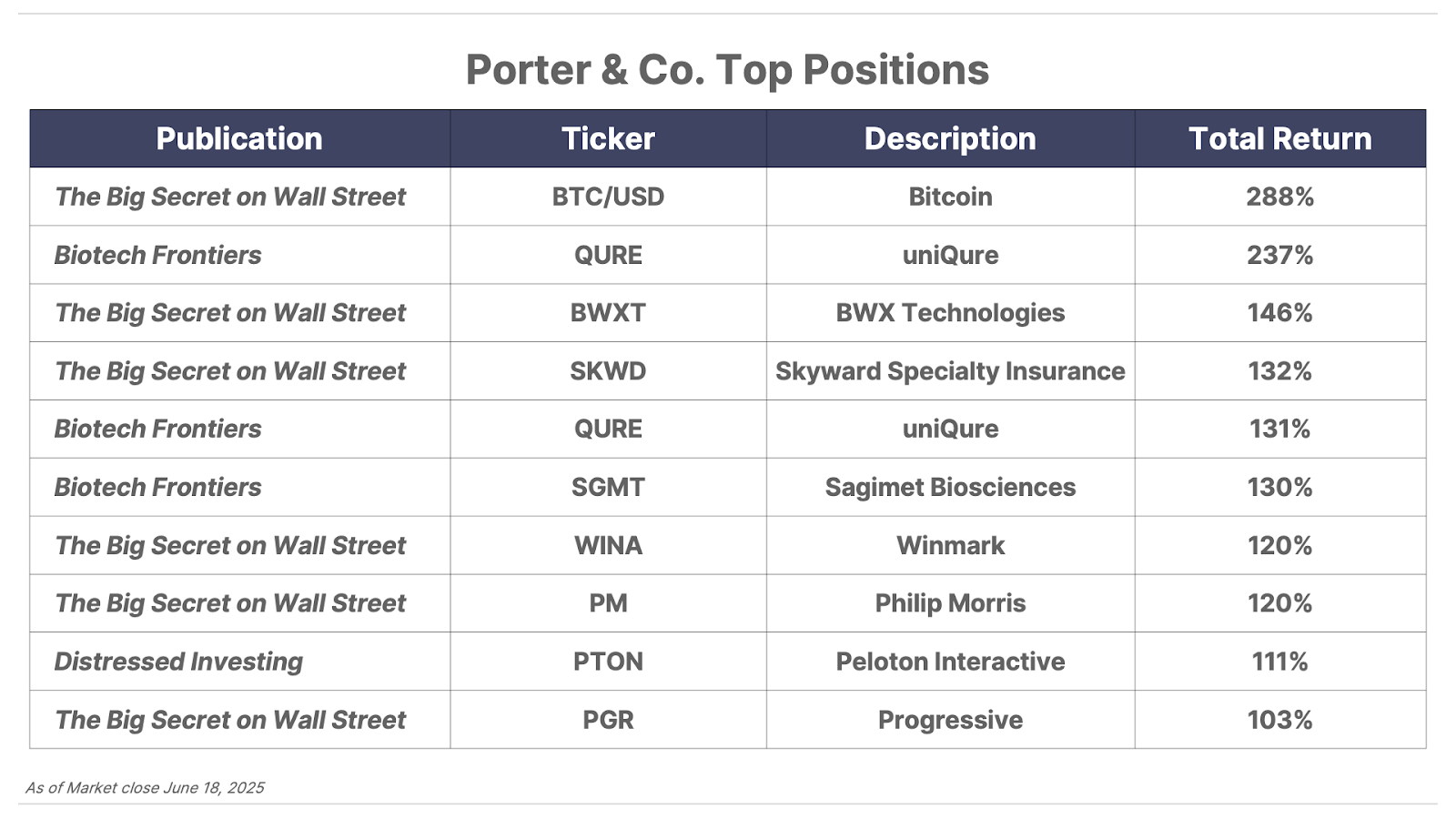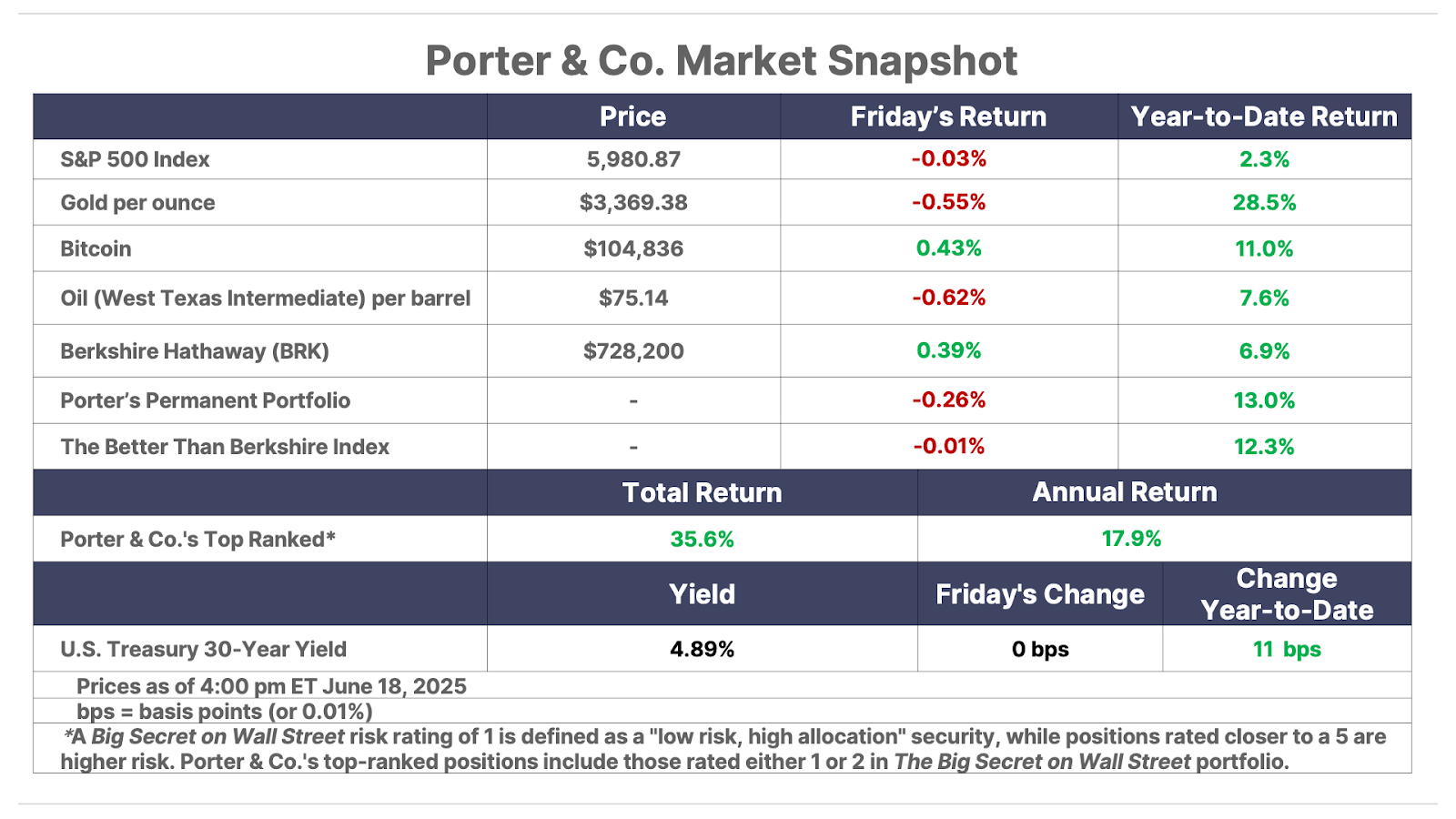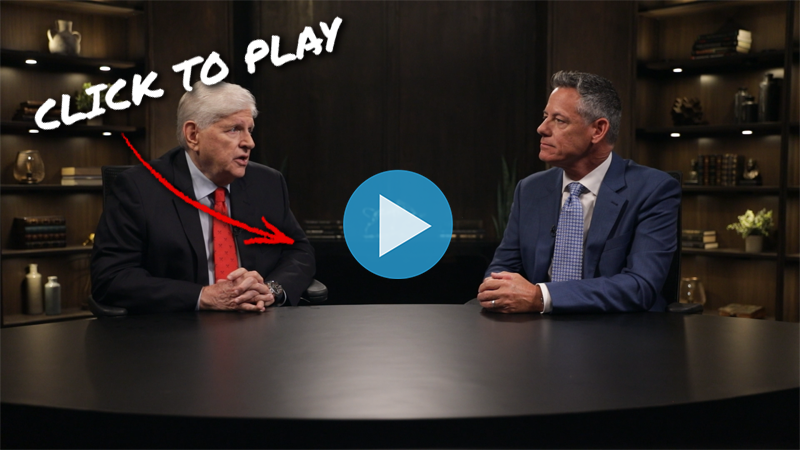Issue #71, Volume #2


It’s Boring. It’s Safe. And It Works.
This is Porter’s Daily Journal, a free e-letter from Porter & Co. that provides unfiltered insights on markets, the economy, and life to help readers become better investors. It includes weekday editions and two weekend editions… and is free to all subscribers.
| The LA Lakers were sold for $10 billion… Was it a good deal for the seller? No… Same investment in McDonald’s would be worth $54 billion… Deere & Co. has been around since 1837… Nothing beats owning a great business… Companies are shedding workers at recession rates… |
Jerry Buss made a fortune with basketball.
Various news outlets are reporting the sale of one of America’s leading sports franchises, the Los Angeles Lakers, for $10 billion.
In 1979, Jerry Buss, a real estate developer, bought the LA Lakers, the LA Kings (hockey), and their stadium (the LA Forum) for $68 million. It was a legendary acquisition, as the Lakers won the draft lottery. They picked “Magic” Johnson and were able to immediately win a championship. The Lakers were the dominant NBA team throughout the 1980s.
In terms of sports investments, Jerry Buss’ 1979 acquisition of the Lakers is very hard to beat. Buss turned $68 million into a $10 billion fortune and created one of the world’s best sports brands. Plus, don’t forget, Buss previously sold the LA Kings in 1988. The price was undisclosed, but NHL expansion teams were going for $50 million at the time. And Buss sold the Forum in a separate deal in 2000 for $20 million.
So let’s round up and say the total cash out in the Lakers deal was $10.1 billion – on a $68 million investment!
Sounds great, doesn’t it?
No. It was a terrible investment, actually.
It underperformed the S&P 500 by about $3 billion, as a $68 million investment into the S&P 500 in 1979 would now be worth $13 billion. A similar investment into a great business – Coca-Cola (KO), McDonald’s (MCD), Philip Morris International (PM), The Hershey Company (HSY), Deere & Co. (DE) – would have made even more.
How much more?
Well, if Buss had invested $68 million in these companies, instead of buying the LA Lakers, he’d have:
- Coca-Cola: $20.9 billion
- Deere & Co.: $23.0 billion
- McDonald’s: $54.3 billion
- Hershey: $46.9 billion
- Philip Morris / Altria : $134.7 billion
Plus, of course, owning the Lakers wasn’t a passive investment. Buss had to provide the management and, for many years, cover the team’s operating losses.
Meanwhile, great businesses don’t require any of that effort. Or additional capital.
Deere has been around since 1837. Just imagine the enormous amount of wealth it has produced for its owners! And think about all of the wars and depressions that it has survived:
- Mexican-American War (1846)
- Panic of 1857 (failure of The Ohio Life Insurance and Trust Company
- U.S. Civil War (1861)
- Panic of 1873 (Collapse of Jay Cooke & Co.)
- Panic of 1893 (railroad speculation bust; stocks fell 55%)
- Spanish-American War (1898)
- Panic of 1907 (failure of United Copper; impact of San Francisco earthquake)
- World War I (1914)
- Crash of 1929 (Dow Jones Industrial Average fell 89% over three years; national bank holiday; private gold seized)
- World War II (1940)
- 1973-1974 Oil Embargo (Dow fell 45% in nine months; inflation spiked over 10% annually)
- 1982 Recession (short-term interest rates hit 20% to bring inflation under control)
- 1987 Black Monday (Dow falls almost 30% in one day)
- 2000 Dot-Com Collapse (Nasdaq falls 78%)
- 2008 Global Financial Crisis (Dow falls 54%)
- 2020 COVID Crash
None of these things bothered the owners of Deere.
We know Deere has been paying a dividend since 1937. And that dividend has never been cut. Over the long term, Deere’s dividend has been growing at 10% annually. And I’d wager that’s going to continue – no matter what happens with Iran, no matter how much money gets invested in artificial intelligence, no matter how much the Nasdaq goes up or down next year. Or over the next 20 years.
If there’s one thing I hope you will learn from our work at Porter & Co. is that nothing beats owning a great business.
Over any reasonable time period, owning a great business is the best way to both grow and protect your wealth.
The best part? Everyone can invest this way. You don’t need any special access. There’s no VIP lane.
Like we showed you recently when we compared Warren Buffett’s private deals to the best public company analog, everyone can invest this way.
It doesn’t take a genius-level IQ to figure out that it’s going to be awfully difficult to replicate Coke’s distribution network and its brands, or that Philip Morris is very likely to dominate the nicotine business for the next 50 years like it has for the last 50 years, or that McDonald’s real estate empire is impossible to replicate, or that most farmers, if given a choice, would rather have a green and yellow tractor.
Sure, it’s boring. It’s so easy anyone can do it. And it’s safe too.
But where’s the fun in that?
Look, if you’re looking for risk and thrills, go to Vegas. If you’re looking to build a fortress of wealth, then own the world’s best companies.
Here’s a few from our current recommended lists: Philip Morris (PM), Domino’s Pizza (DPZ), Deere & Co. (DE), Diageo (DEO), Nike (NKE), Hershey (HSY), Uber Technologies (UBER), Coca-Cola (KO), McDonald’s (MCD), Caterpillar (CAT), Johnson & Johnson (JNJ), and Nvidia (NVDA).
Another factor that will help ensure success? Look for “Lindy” businesses.
Long-time readers may remember our research into “Lindy” businesses, which are exceptionally long-lived. Deere, as I mentioned, has been around since 1837. InterContinental Hotels (IHG) since 1777. Colgate-Palmolive (CL) since 1806. Procter & Gamble (PG) since 1837. Stanley Black & Decker (SWK) since 1843. Travelers (TRV) since 1853.
No, an old business doesn’t automatically mean a great business, but when you find a great business that’s been around for decades, it’s usually the safest choice.
The SPECIAL ENCORE PRESENTATION is Now AVAILABLE!
Three Things To Know Before We Go…
1. The Fed holds the line on rates. Despite a barrage of criticism from President Donald Trump this week – including calling Chair Jerome Powell “destructive,” “a disgrace,” and “a real dummy,” and saying rates “should be 2.5 [percentage] points lower” – the Federal Reserve held rates steady again this month. While the Fed did note that “uncertainty about the economic outlook has diminished,” it warned that the risks of higher inflation and slowing economic growth (aka “stagflation”) remain elevated. In his post-meeting press conference, Chair Powell reiterated that the Fed is “well-positioned” to wait for more data and is in no hurry to cut rates again.
2. Surging job cuts signal labor market weakness. U.S. employers have announced a total of 700,000 job cuts so far this year, according to career consultancy firm Challenger, Gray & Christmas. That’s the highest year-to-date total through May since recessions in 2020 and 2009, and provides yet another warning sign about the growing weakness in America’s labor market.

3. A Fed report shows declining economic activity. In the Federal Reserve’s June report on the summary of U.S. economic conditions, known as the Beige Book, the central bank observed that economic activity had declined in the U.S. The report summary indicated that the overall economic outlook was “slightly pessimistic and uncertain.” The report also showed that all 12 of the Fed’s regional districts are experiencing lower labor demand, with some districts reporting hiring pauses, declining hours worked, and layoffs. Overall, the Fed’s latest Beige Book indicates the U.S. economy is stalling.
Tell me what you think: [email protected]
Good investing,
Porter Stansberry
Stevenson, Maryland


Please note: The investments in our “Porter & Co. Top Positions” should not be considered current recommendations. These positions are the best performers across our publications – and the securities listed may (or may not) be above the current buy-up-to price. To learn more, visit the current portfolio page of the relevant service, here. To gain access or to learn more about our current portfolios, call Lance James, our Director of Customer Care, at 888-610-8895 or internationally at +1 443-815-4447.
